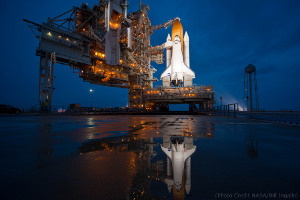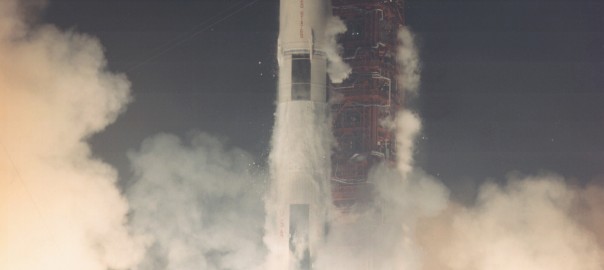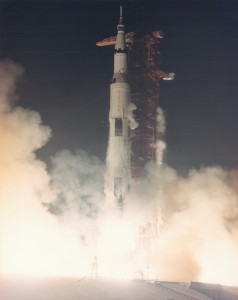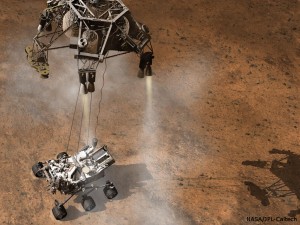
Atlantis on the pad 39A for its final flight.
End of an Era
Yesterday (July 8, 2011), we witnessed what will likely be the last launch of the Space Shuttle. Of the three operational shuttles NASA had remaining, Atlantis was the second oldest. Atlantis’s first flight took place in October 1985.
This final flight of Atlantis signals the end of an era in more ways than one. The shuttle program is a spectacle. While I’ve never seen one launch in person, I’m sure the TV does not do it justice.
NASA and The Future:
Its my belief that budget cuts will win out and eventually we will be mostly out of the Human space exploration business. With Orion and Constellation cancelled, the next vehicle planned is the MPCV (Multi-purpose Crew Vehicle). The advantage of the MPCV over Orion is its 21-day mission capability. I’m not sure who labeled this as “Deep Space” but someone did. I guess NASA is taking the approach of component space travel. The MPCV would be a component of a larger spacecraft for say an asteriod or Mars trip. My major complaint is the common one, it seems as if we are taking a step backwards in our designs of exploration vehicles.
Stagnated Exploration
Think about it, it took us under a decade to reach the moon. After just a few visits, we never went back, our deeper exploration stagnated. Humans have the desire to go some place for themselves, not just sending robots. Seeing a human walking on another planet generates more interest than robots. Humans also are vastly more capable than a robot. Humans are able to adapt to changing situations and circumstances that a robot may not be able to. Also Humans can think and change analytical approaches if the need arises.
The Political Speil
It is also my belief that a good “Economic Stimulus” would be to reengage the public in the allure of space travel. Wouldn’t the Math, Science, and Engineering jobs created and maintained by the funding of the US human exploration of space be better than some of the other less technical jobs “created.” Funding to “create jobs” comes from somewhere, one of those places is pulling budget dollars from agencies such as NASA. Also, studies show that we are falling behind in Math and Science… How can we hope to improve when one of the biggest math and science sources is underfunded.
Links



